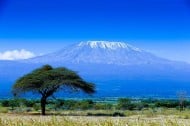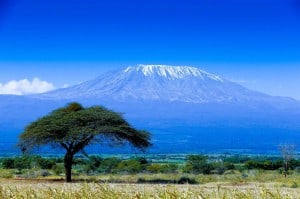
4 Tips for Climbing Mount Kilimanjaro
Do you want to be among the 25,000 people that climb Mount Kilimanjaro every year?
If so, then your preliminary research has likely already convinced you that it’s not exactly a walk in the park. If you want to learn how to climb Kilimanjaro, you’ll need to think seriously about your physical and mental capabilities.
You’ll also need to start training and planning now to ensure that you have a safe and successful climb.
What do you need to know and prepare for if you want to climb this nearly 20,000 feet high peak in Tanzania?
Read on to find out.
Our Top Tips on How to Climb Kilimanjaro
Now, let’s take a look at our most crucial tips for a successful climb. Follow these tips to ensure you’re able to make incredible memories while climbing.
1. Know What to Wear
One of the most important things to consider when learning how to climb Kilimanjaro?
You’ll need to be sure that you’ve packed the right kind of clothing. However, you might not expect the serious variations in weather in Tanzania. Many local villagers claim that you can easily experience all four seasons in a day!
So, don’t let the warm African climate fool you.
In addition to your hiking clothing, you should also bring a jacket/parka for cooler nights.
One crucial tip: try to steer clear of clothing made out of cotton, because once it gets wet, the altitude will make it tough to dry out again. Additionally, if possible, leave your black clothing at home. If you’re planning on traveling around Africa, the color can make you a target for flies.
In terms of footwear, we recommend that you invest in high-quality hiking boots.
Lastly, don’t worry about wearing the same thing several days in a row. Everyone else will be doing it. Layer as much as possible to save room in your suitcase, and consider insect-repellant clothing as well.

2. Prepare Yourself Physically
When people begin to research how to climb Kilimanjaro, many get bogged down in thinking that they need to be in the best physical shape of their lives in order to be successful.
In reality, while being able to walk for 5-7 hours at a normal pace is essential, you don’t need to be a bodybuilder to tackle Kilimanjaro.
Your success depends far more on the quality and weight of the equipment you’ve purchased than just physical strength alone.
Be aware that sometimes, your attitude can have much more of a negative impact on your climbing experience than anything else. Start finding positive mantras that you can repeat to yourself when things get tough now.
Remember that you’ll have the ability to set your own pace when you climb. This pacing is incredibly important. Climbing isn’t a competition, and if you try to do too much, you risk not being able to finish.
Finally, prepare yourself for the serious changes in altitude. This may make you more tired than usual, and may even impact your appetite. Usually, this change in altitude takes place around the second day of the trip.
Stay hydrated, take it slow, and take a rest when you need to in order to avoid Acute Mountain Sickness.
3. When to Book and Which Route to Take
Another thing to consider when you’re studying up on how to climb Kilimanjaro?
You should take the time of year into consideration when booking your trip. The rainy seasons of Kilimanjaro last from March-May and then again from November-February.
We suggest that less experienced climbers book their trip to Tanzania when it’s not the rainy season for safety reasons.
However, if you’re an experienced climber, you may prefer to give the famous Rongai Route a try, which is a beloved challenge among climbers who prefer the rainy season.
Speaking of routes…be sure to do your homework and decide on your preferred route before you go. You can also work with a climbing/tour guide to determine which route would be the best for both your interests and current fitness level.
You’ll be able to choose from a grand total of seven different routes, approaching the summit from lots of different directions.
If you’re a newer climber, then we suggest you try out the new Northern Circuit. This route gives you plenty of ways to acclimatize, meaning you’ll have less of a chance of getting sick.
If you’re more interested in the scenery, then try the Lemosho or the Shira route. Remember, you can always come back and try another route on your next trip!
4. Food and Drink
Finally, let’s close with a brief discussion about eating and drinking during your climb.
Remember, food is what will fuel you — and you’ll probably need to eat more than you normally do to stay alert and energized. If you’re traveling with a guide, they’ll cook and carry all of your food for you.
Expect coffee, oatmeal, eggs, and lots of sandwiches and stews.
Still, drinking water is the most crucial part of your climb. To avoid sickness and dehydration, we strongly suggest drinking no less than three liters of water every single day.
If you’d like to add an energy drink into the mix, that’s fine — but don’t use it as a substitute for water.
What Else Can You Do in Africa?
Now that you know how to climb Kilimanjaro, you’re likely extremely anxious and excited to start planning your trip to Tanzania!
Keep in mind that, while of course your climb will be strenuous, it will usually take no more than about a week to complete.
This means that you’ll likely have leftover time on your vacation to explore either Tanzania or another destination in Africa.
One of our favorite suggestions?
Why not book a safari, and have the chance to rub elbows with leopards, lions, elephants, and more? After learning about the elements on your climb, a safari is an incredibly exciting way to get to know the wildlife that share the African terrain.
Spend some time on our website or reach out to us to learn more about some of our top African safaris. We can’t wait to see you and hear all of your climbing Mount Kilimanjaro stories soon.